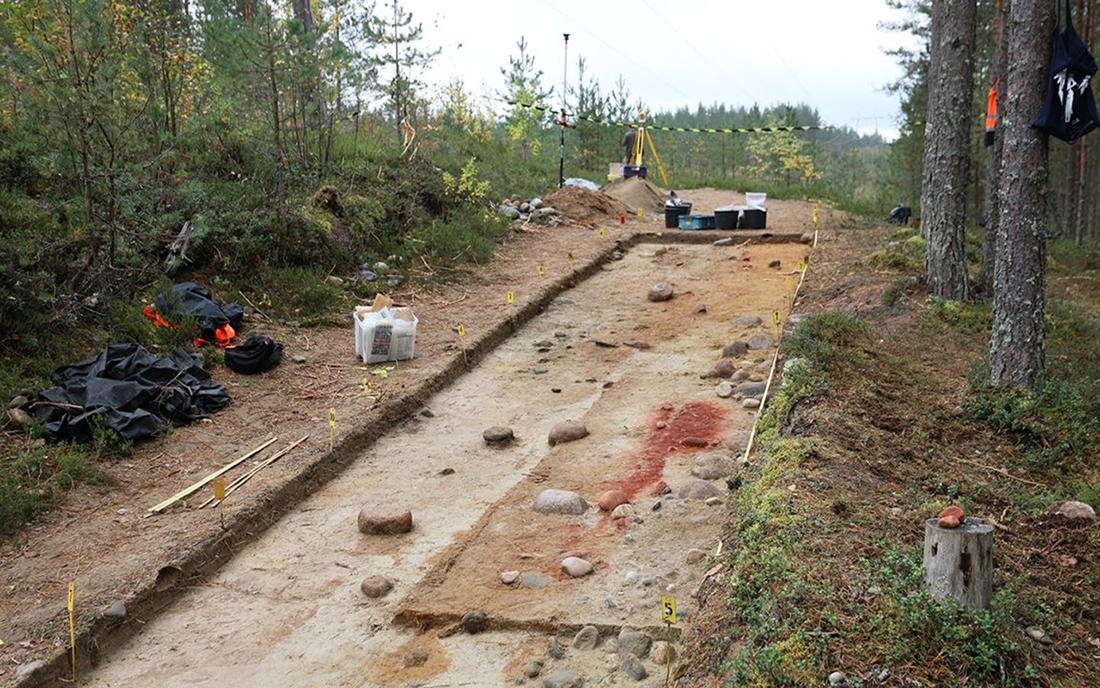A young child’s burial site has been uncovered in Eastern Finland, providing a unique glimpse into how Stone Age humans treated their dead.
Tooth fragments from a child who lived 6,000 years ago in the Mesolithic period were found buried underneath a gravel road in Finland.
An analysis of the tomb reveals the pomp and grandeur of that child’s final resting place: fur, feathers, and rare plant fibers.
Researchers first became aware of the Majoonsuo grave in 1992, when a bright red ocher, a clay rich in iron, was discovered on the surface of a new service trail in the forest. Red ocher has been linked to rock art, ornamentation, and burials. Fearing about the site’s destruction, the Finnish Heritage Agency’s Archaeological Field Services team examined it in 2018.

Finland’s Stone Age societies buried their dead in ground pits. Because the soil in Finland is so acidic, little remains retained after thousands of years, making traces of archaeological evidence extremely rare.
After an analysis using a painstaking protocol to reveal the microscopic evidence, the kid’s teeth were discovered in the burial, as well as canine and small mammalian hairs, plant fibers, and small fragments of bird feathers that are the oldest feather fragments ever found in Finland.
“Dogs buried with the deceased have been found in, for example, Skateholm, a famous burial site in southern Sweden dating back some 7,000 years,” study coauthor Kristiina Mannermaa, researcher and associate professor in the department of cultures at the University of Helsinki, said in a statement.
“The discovery in Majoonsuo is sensational, even though there is nothing but hairs left of the animal or animals – not even teeth. We don’t even know whether it’s a dog or a wolf,” she says, adding: “The method used demonstrates that traces of fur and feathers can be found even in graves several thousands of years old, including in Finland.”
Lead study author Tuija Kirkinen, a postdoctoral researcher in the Department of Cultures at the University of Helsinki, conducted the analysis of the plant- and animal-based materials in the soil.
She also found plant fibers, most likely from willows or nettles, that may have been used to make fishing nets, garment cords, or string bundles.
“The work is really slow and it really made my heart jump when I found minuscule fragments of past garments and grave furnishings, especially in Finland, where all unburnt bones tend to decompose,” she said. “This all gives us a very valuable insight about burial habits in the Stone Age, indicating how people had prepared the child for the journey after death.”
The study was published in the PlosONE series.
























